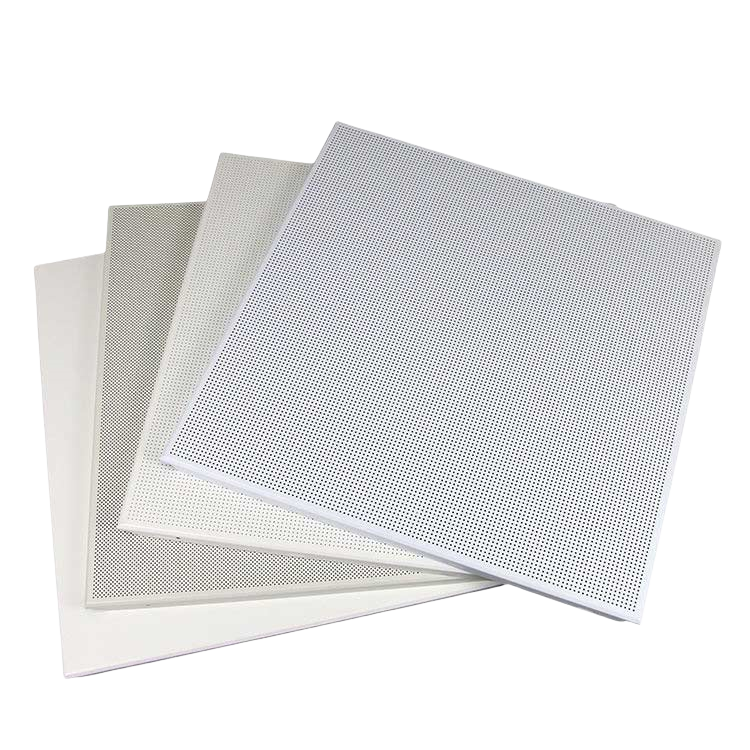Installing Aluminum Clip-In Panels: A Guide to Enhancing Your Space
Author:Jayminton Time:2024-07-23

Aluminum clip-in panels offer a sleek and modern aesthetic that can transform any interior space with ease. Whether you're renovating a commercial office, upgrading a residential living area, or enhancing a retail environment, these panels provide both functionality and style. In this article, we'll explore the process of installing aluminum clip-in panels, highlighting key considerations and steps to ensure a successful installation.
Understanding Aluminum Clip-In Panels
Aluminum clip-in panels are lightweight, durable, and customizable, making them a popular choice for architects, interior designers, and property owners alike. They are typically composed of high-quality aluminum sheets that are attached to a concealed suspension system. This system allows for easy installation and removal, facilitating maintenance and future renovations.
Pre-Installation Preparation
Before starting the installation process, it's crucial to undertake thorough planning and preparation:
Measurement and Planning: Measure the dimensions of the installation area accurately. Plan the layout of the panels to ensure a symmetrical and balanced appearance, especially if you're covering large surfaces.
Surface Preparation: Ensure that the surface where the panels will be installed is clean, dry, and flat. Address any imperfections or irregularities that could affect the installation.
Tools and Materials: Gather all necessary tools and materials, including the panels themselves, suspension rails or clips, screws, a level, measuring tape, and a drill. Having everything prepared beforehand will streamline the installation process.
Installation Steps
Follow these steps to install aluminum clip-in panels effectively:
Step 1: Install Suspension System
- Attach Suspension Rails: Begin by installing the suspension rails or clips onto the surface. These will support the aluminum panels and provide a secure attachment.
- Ensure Alignment: Use a level to ensure that the suspension rails are installed horizontally and evenly across the entire installation area.
Step 2: Install aluminum panels
- Clip-In Mechanism: Position the first aluminum panel into the suspension rail's groove or clip. These panels typically have a clip-in mechanism that allows them to snap securely into place.
- Ensure Alignment and Level: Use a level periodically to ensure each panel is installed straight and level. Adjust as necessary before proceeding to the next panel.
Step 3: Continue Installation
- Interlocking Panels: Continue installing panels by interlocking them with the previously installed ones. This interlocking design ensures a seamless appearance without visible joints.
- Cutting Panels: If necessary, cut panels to fit corners or around fixtures using a suitable cutting tool. Ensure precise measurements to maintain a professional finish.
Step 4: Final Adjustments and Inspection
- Check Alignment: Once all panels are installed, check the alignment and overall appearance. Make any final adjustments to ensure consistency and uniformity.
- Secure Panels: Ensure all panels are securely clipped into place and that there are no gaps or loose fittings.
Maintenance and Care
Aluminum clip-in panels are relatively low maintenance but benefit from regular cleaning to preserve their appearance:
- Cleaning: Use a mild detergent and water solution to clean panels periodically. Avoid abrasive cleaners or materials that could scratch the surface.
- Inspect Regularly: Periodically inspect panels for any signs of damage or wear. Address any issues promptly to maintain the panels' integrity.
Conclusion
Installing aluminum clip-in panels can significantly enhance the aesthetic appeal and functionality of any interior space. By following the steps outlined above and paying attention to detail, you can achieve a professional installation that meets your design objectives. Whether you're aiming for a contemporary office environment or a sophisticated residential setting, aluminum clip-in panels offer versatility, durability, and ease of installation, making them a standout choice for modern interior design solutions.

 S1 Clip-in Metal ceiling System
S1 Clip-in Metal ceiling System JMT-L4.2 U-Baffle System
JMT-L4.2 U-Baffle System JMT Aluminum Wall Cladding
JMT Aluminum Wall Cladding Aluminum Honeycomb Panel
Aluminum Honeycomb Panel Air-Condenser Cover
Air-Condenser Cover Metal Heat Cover
Metal Heat Cover Singapore Changi Airport T2 Arrival
Singapore Changi Airport T2 Arrival Australia Marvrl Stadium City Edge
Australia Marvrl Stadium City Edge Enterprise Information Announcement
Enterprise Information Announcement Construction Industry Solutions
Construction Industry Solutions About Jayminton
About Jayminton Contact US
Contact US